The Anti-Inflammatory Kitchen
Reframing Inflammation with Grace, Science, and Simple Swaps—Because How You Feel Matters
According to the WHO (World Health Organization), nearly 125 million people worldwide live with some form of chronic inflammatory disease. Chronic inflammation is now linked to 3 out of 5 deaths globally—from heart disease to diabetes to autoimmune conditions. These numbers aren’t distant statistics; they’re affecting our families, our friends, and maybe even ourselves.
Naturally, we turn to medication for answers—and sometimes, that’s necessary.
But what if one of our most powerful tools for reducing inflammation isn’t found in a bottle... but on our plate?
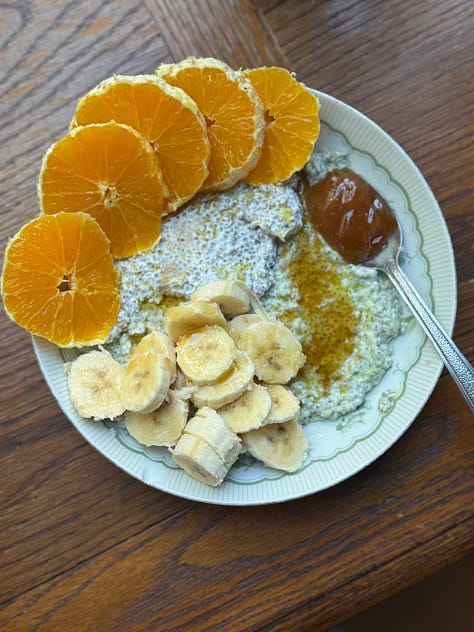
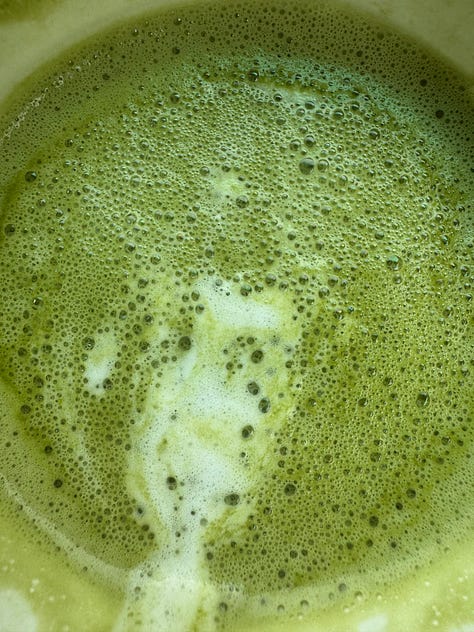

As someone with a Master’s in Nutrition, I’ve spent years studying how food interacts with our biology—not just to feed us, but to protect and restore us. I believe food and lifestyle are some of the most powerful prevention tools we’ve been given. I don’t write off medication—there’s a time and place for it. I believe in a yes/and approach: one that embraces modern medicine when needed, and honors the body’s ability to heal when supported with care, rhythm, and nourishment.
When we talk about inflammation, we’re not talking about a trend. We’re talking about the body’s internal alarm system—a system designed to protect us. But when it stays switched on too long, it can become the very thing that wears us down.
So let’s get into it.. What is inflammation? Why does it matter? And how can we eat to calm the system—not restrict it? In this Rabbit Hole, you’ll find:
A Deep Dive into Inflammation
A Note on Fear Based Nutrition, and Wellness Perfectionism
Foods That Need to Stay in Balance
Foods that Help and Why (Including a Printable Anti-Inflammatory Grocery List)
Final Thoughts and Take Aways
What is Inflammation?
Inflammation, according to the Cleveland Clinic, is your body’s natural defense mechanism—an immune response triggered by injury, infection, or stress. Think: a swollen ankle, a fever, a cut that becomes red and warm. This is acute inflammation—short-term and necessary. It helps us heal :)
But when inflammation becomes chronic, it starts to quietly damage the body from within. This lingering immune response has been linked to damaging tissue, disrupting hormones, slowing metabolism, and over time, contributing to diseases like PCOS, Crohn’s, insulin resistance, IBS, Alzheimer’s, and autoimmune disorder.
On a metabolic level, chronic inflammation:
Increases oxidative stress and free radicals
Disrupts insulin signaling and blood sugar regulation
Impairs mitochondrial function (energy production)
Alters gut barrier integrity
Affects hormones like estrogen detoxification and thyroid function
Here’s the exciting part — much of this is diet- and lifestyle-related, thus in your control.

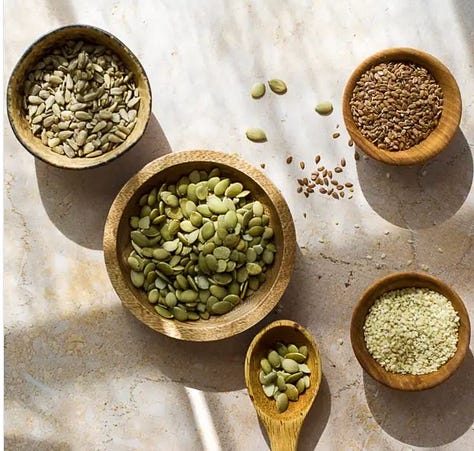

Lets Reframe the Fear
This isn’t a cleanse. It’s not about cutting everything out or chasing wellness perfection.
I’ve noticed a growing culture—especially online—where everything is labeled “toxic” or something to avoid and food becomes something to fear. This post is not about that.
Even with a background in nutrition, I’ve had moments of frustration thinking: “Is everything harmful now? Can’t I just eat without overthinking it?” It’s a valid feeling. One I know many of us share.
But the truth is: yes—there’s still so much we can eat to nourish and support our bodies.
This isn’t about fear. It’s about clarity. It’s about tuning into your body’s natural rhythm and resilience—discovering a world of ingredients that don’t just fill you up, but actually help you feel better.
My approach is never rooted in restriction. It’s about simple shifts, balance, and returning to the rhythms that help your body exhale.
So What Is an Anti-Inflammatory Diet?
It’s not about perfection—it’s about creating steady, supportive rhythms. Here’s the foundation:
Whole, unprocessed foods
Blood sugar stability
Healthy fats that cool inflammation
Nutrients that support detoxification, gut health, and repair
Plants rich in antioxidants, polyphenols, and fiber
Gentle metabolic rhythm (meals at regular times, daily movement, rest)
When we eat this way, we send our bodies a message: You’re safe. You’re supported. You can exhale.
Foods That Feed the Fire
These aren’t evil—but when over-consumed, they can contribute to inflammation:
Refined seed oils (soybean, canola, corn)
Processed meats (high in AGEs — compounds that forms when sugar combines with protein and fat and can lead to inflammation).
Added sugars & refined flours (spike insulin)
Artificial sweeteners (disrupt the gut and blood sugar)
Alcohol (especially in excess)
Overuse of “low-fat” diet products (nutrient-poor and processed)
These foods may not cause harm immediately, but over time, they can create an environment where the body stays in low-grade defense mode—tired, inflamed, and dis-regulated.
Foods That Help Heal—And Why They Work
Healthy Fats:
The fats found in olive oil, avocado, walnuts, chia seeds, and wild salmon are rich in omega-3s and monounsaturated fats—and they play a direct role in lowering inflammation, supporting hormone production, protecting the brain, and even healing the gut.1


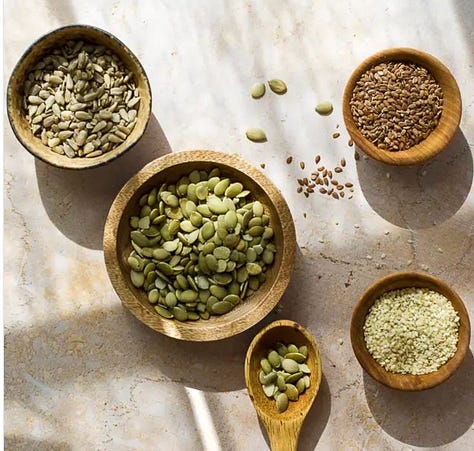
Why Do These Fats Help?
Healthy fats don’t just fuel the body—they also calm it down. Here’s how:
Healthy fats strengthen your cells
Every cell in your body has a membrane made of fat. Studies show healthy fats keep those membranes flexible and responsive, which reduces overreactive inflammation.
They stabilize blood sugar and reduce cortisol spikes
Fats slow digestion prevent blood sugar spikes (which trigger cortisol, a stress hormone linked to inflammation). They also support the production of estrogen and progesterone—especially important for women, study shows.
Vitamins A, D, E, and K all require fat to be absorbed—and these nutrients are essential for a healthy immune system.
They help make signaling molecules that resolve inflammation
Not all fats are bad—in fact, some fats help the body turn inflammation off. Omega-3 fatty acids, found in foods like wild salmon, chia seeds, and walnuts, support that process by producing signals that calm the immune system when healing is done. But it’s all about balance. Your body also needs omega-6 fats—they help with cell repair and immune defense. The issue isn’t omega-6 itself—it’s that modern diets (high in seed oils like soybean, corn, and sunflower) deliver far too much, and not nearly enough omega-3 to offset it.
Our ancestors ate omega-6 and omega-3 fats in a near 1:1 ratio. Today, that’s closer to 15:1, tipping the scale toward chronic, low-grade inflammation.
The solution isn’t cutting omega-6 completely—it’s restoring the ratio by:
Reducing processed foods and seed oils
Prioritizing omega-3-rich foods like fatty fish, flax, chia, and walnuts
Even small shifts can bring your body back to balance (click here for more info on the importance of the ratio of omega-6/omega-3).
Simple Swaps
Cook with avocado oil or ghee instead of seed oils
Drizzle olive oil over salads or to finish dishes
Add chia or walnuts to oats or smoothies in the morning
Try to eat wild salmon or sardines twice a week
Cut back on ultra-processed snacks made with industrial seed oils
Root Veggies & Complex Carbs:
We often hear that “carbs cause inflammation//bloat”—but that’s only part of the story. Highly processed carbs can spike blood sugar and stress the system, yes—but complex, whole-food carbohydrates like, sweet potatoes, beets, oats, squash, & quinoa, do the opposite: they ground, nourish, and support the body’s natural healing processes.

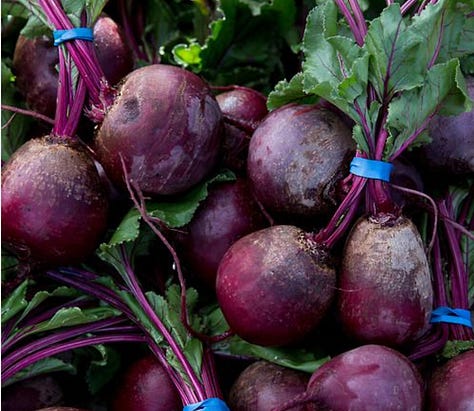
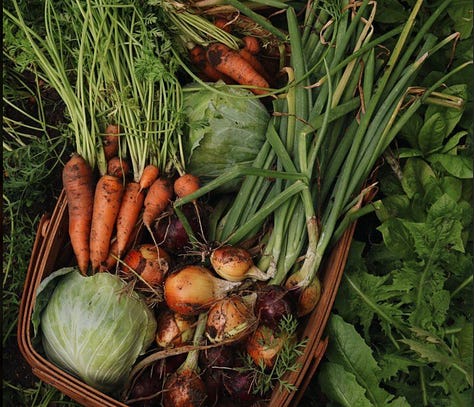
Here’s how these vibrant, earthy staples play a role in reducing inflammation and restoring balance:
They provide steady, sustained energy without a blood sugar spike
Complex carbs are slow-burning carbohydrates—meaning they digest gradually, helping to keep blood sugar stable. When blood sugar spikes and crashes, it creates internal stress and inflammation. Complex carbs help prevent that rollercoaster, according to the National Institute of Health.They feed your gut—where inflammation often begins
Complex carbs are rich in prebiotic fiber, which nourishes the beneficial bacteria in your gut.2 A healthy gut microbiome helps regulate your immune system and reduces inflammation at its source.
If you’re curious on the full rabbit hole into gut health—read ‘Go With Your Gut’ here 🐇
Small Swaps to Restore Balance
Swap fries for roasted root veggies with olive oil and herbs
Replace bagels with chia pudding + protein (recipe here!)
Choose steel-cut oats over instant
Blend cooked beets into smoothies, pickle them, or toss into a salad
Try a quinoa bowl with roasted squash, onions, and tahini
Cut back on ultra-processed snacks that spike blood sugar
Colorful Plants:
You’ve likely heard the phrase “eat the rainbow,” but this recommendation is more than a catchy slogan—it’s rooted in nutritional biochemistry. A plate full of color reflects a wide array of bioactive plant compounds, many of which have direct anti-inflammatory effects.
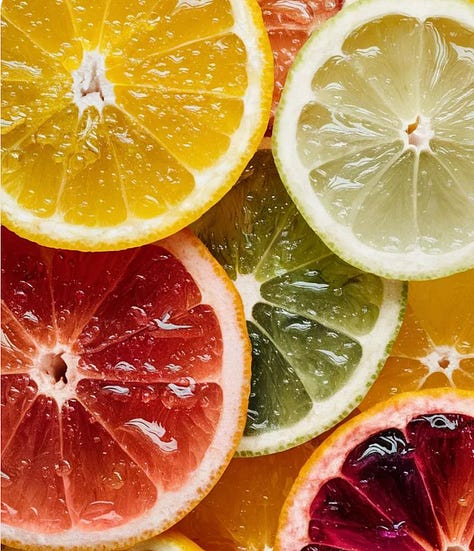
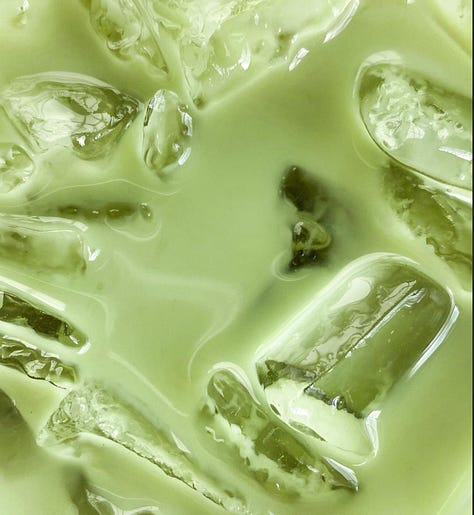

Each hue in nature is tied to specific plant compounds that support the body’s healing systems. These include antioxidants and polyphenols—micronutrients that help calm inflammation at the cellular level.3
Antioxidants protect the body from oxidative stress—the kind of cellular damage that fuels chronic inflammation, aging, and disease. Studies show they act like tiny bodyguards, neutralizing free radicals before they can harm tissues.
Think: Berries, Dark Leafy Greens, Beets, Red Cabbage, Purple Sweet Potatoes, Pomegranates, Dark Chocolate (70%+ cacao), Artichokes, Grapes, Walnuts, Green Tea and Matcha, Spices, Tomato, and Citrus fruits
NOTE: these are included in the printable shopping list below!
Polyphenols, found in vibrantly colored fruits, vegetables, herbs, and teas, have been shown to modulate the immune response, calm overactive signaling pathways, and even feed beneficial gut microbes.
You can find them in: Berries, Olives & Extra Virgin Olive Oil, Dark Chocolate & Cacao Powder, Coffee, Green Tea, Grapes, Apple Peel, Red Onions, Artichokes, Broccoli, Herbs, Spices, Seeds, Nuts, and Legumes
NOTE: these are also included in the printable shopping list below!
Small Swaps to Boost Antioxidants & Polyphenols
Start your day with berries: add frozen blueberries or blackberries to smoothies, oats, or chia pudding for a potent antioxidant boost.
Swap candy for dark chocolate (70% or higher). My favorite sweet treat is dates, sea salt, and dark chocolate
Skip the sugar and additive creamers in your morning coffee. Instead, enjoy green tea, a matcha with A2 milk, or Coffee without the additives
Cook with herbs and spices by adding rosemary, oregano, turmeric, cinnamon, or cloves liberally. These are among the most polyphenol-rich foods we have.
Snack on grapes, pomegranate seeds, or red apples.
Add legumes and seeds like lentils, black beans, chia, tahini, and flax — a recipe that encompasses this is my hummus recipe here.
Challenge yourself to include OR add at least 3–4 different colors on your plate per meal
Mineral-Rich Foods:
Minerals are essential micronutrients help the body carry out countless essential processes—including those that regulate inflammation, hormone production, immune response, and detoxification. They help the body maintain equilibrium, repair damaged tissue, and respond appropriately to internal and external stressors.

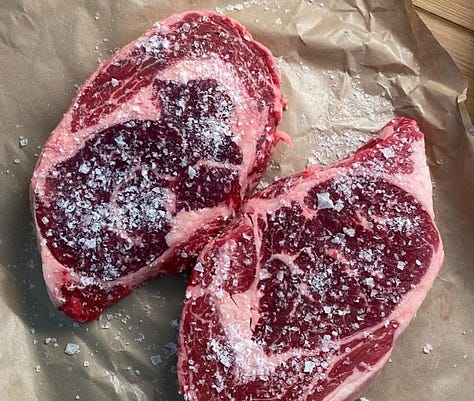

Chronic inflammation often depletes these minerals—or worsens when we’re already deficient. Without enough magnesium, zinc, selenium, or potassium, the body can struggle to resolve inflammation, leading to fatigue, hormone disruption, and impaired immunity.4
While we tend to associate minerals with leafy greens or supplements, many of the most bioavailable forms are found in ancestral foods: slow-simmered broths, unrefined sea salt, grass-fed meats, raw honey, and herbal infusions. These aren't trendy wellness add-ons—they're traditional sources of deep, cellular nourishment.
Here are some of the most powerful mineral-rich additions to an anti-inflammatory lifestyle:
Grass-fed beef & organ meats
Liver is especially rich in iron, zinc, copper, selenium, and B vitamins—all highly absorbable and supportive for hormone production and immune function.Unrefined sea salt (like Celtic or Redmond)
Unlike table salt, it contains magnesium, calcium, potassium, and trace elements that support electrolyte balance and adrenal function.Bone broth
When slow-simmered, bones release calcium, magnesium, phosphorus, and collagen, which help repair gut lining, support joints, and restore tissue.Raw honey
Naturally rich in zinc, iron, manganese, and enzymes that gently support immunity and digestion.Herbal mineral teas
Teas like nettle, rooibos, oatstraw, and alfalfa are rich in minerals like iron, magnesium, manganese, and silica. Steeped long, they’re a calming, non-stimulating way to re-mineralize the body.Sea vegetables & oysters
High in iodine, calcium, magnesium, and iron—a sprinkle of dulse or a few oysters can offer a serious mineral upgrade.Coconut water
Naturally high in potassium, sodium, and magnesium, making it perfect for post-sweat hydration or adrenal support.Medicinal mushrooms (like chaga or reishi)
Grown in wild soil and trees, these are a source of zinc, copper, potassium, and immune-regulating compounds. Best enjoyed as a slow-steeped tea or tonic.Sprouted & fermented foods
Processes like sprouting and fermentation unlock magnesium, zinc, and iron, making plant minerals easier to absorb. Think: sourdough, sprouted lentils, or fermented black beans.
If you’re curious about the full rabbit hole of sourdough—its potential benefits and why I believe everyone should have sourdough in their kitchen—read the full Rabbit Hole here 🐇
You don’t need to change everything at once. Try these simple swaps to gently increase your mineral intake throughout the day:
Sea salt → instead of table salt
Raw honey → instead of white sugar
Eggs → instead of boxed cereal for breakfast
Nettle or rooibos tea → instead of an afternoon coffee
Cook grains in bone broth → instead of water
Coconut water → instead of sugary sports drinks
Sardines on your salad→ instead of deli meat (calcium + selenium!)
Add leafy greens to soups, eggs, or smoothies
Sprinkle seaweed flakes into rice, soups, or dressings
For Anti-Inflammatory Recipes, chick here!
Final Thoughts
Wheeew... did you make it to the end?! I know this was a deep dive, but I hope it left you feeling informed—not overwhelmed—and a little more connected to the incredible ways your body works.
My hope is that if you take one thing away from this:
Inflammation isn’t a flaw—it’s a built-in defense system. But in our modern world, that system can get stuck in overdrive. The goal isn’t to be perfect. It’s to support your body’s natural rhythm, shift out of survival mode, and add in the foods and habits that help you function and feel your best.
This isn’t about doing everything right. It’s about tuning in, discovering what works for you, and making simple choices that bring you back to balance.
If you enjoyed this, please share, comment, or subscribe! And thank you so much for reading my rabbit hole and supporting this little corner of nourishment and curiosity.
—Victoria Louise
Zivkovic, A. M., Telis, N., German, J. B., & Hammock, B. D. (2011). Dietary omega-3 fatty acids aid in the modulation of inflammation and metabolic health. California agriculture, 65(3), 106–111. https://doi.org/10.3733/ca.v065n03p106
Aziz, T., Hussain, N., Hameed, Z., & Lin, L. (2024). Elucidating the role of diet in maintaining gut health to reduce the risk of obesity, cardiovascular and other age-related inflammatory diseases: recent challenges and future recommendations. Gut microbes, 16(1), 2297864. https://doi.org/10.1080/19490976.2023.2297864
Pandey, K. B., & Rizvi, S. I. (2009). Plant polyphenols as dietary antioxidants in human health and disease. Oxidative medicine and cellular longevity, 2(5), 270–278. https://doi.org/10.4161/oxim.2.5.9498
Stefanache, A., Lungu, I. I., Butnariu, I. A., Calin, G., Gutu, C., Marcu, C., Grierosu, C., Bogdan Goroftei, E. R., Duceac, L. D., Dabija, M. G., Popa, F., & Damir, D. (2023). Understanding How Minerals Contribute to Optimal Immune Function. Journal of immunology research, 2023, 3355733. https://doi.org/10.1155/2023/3355733


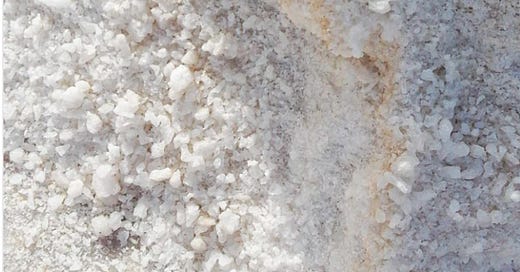


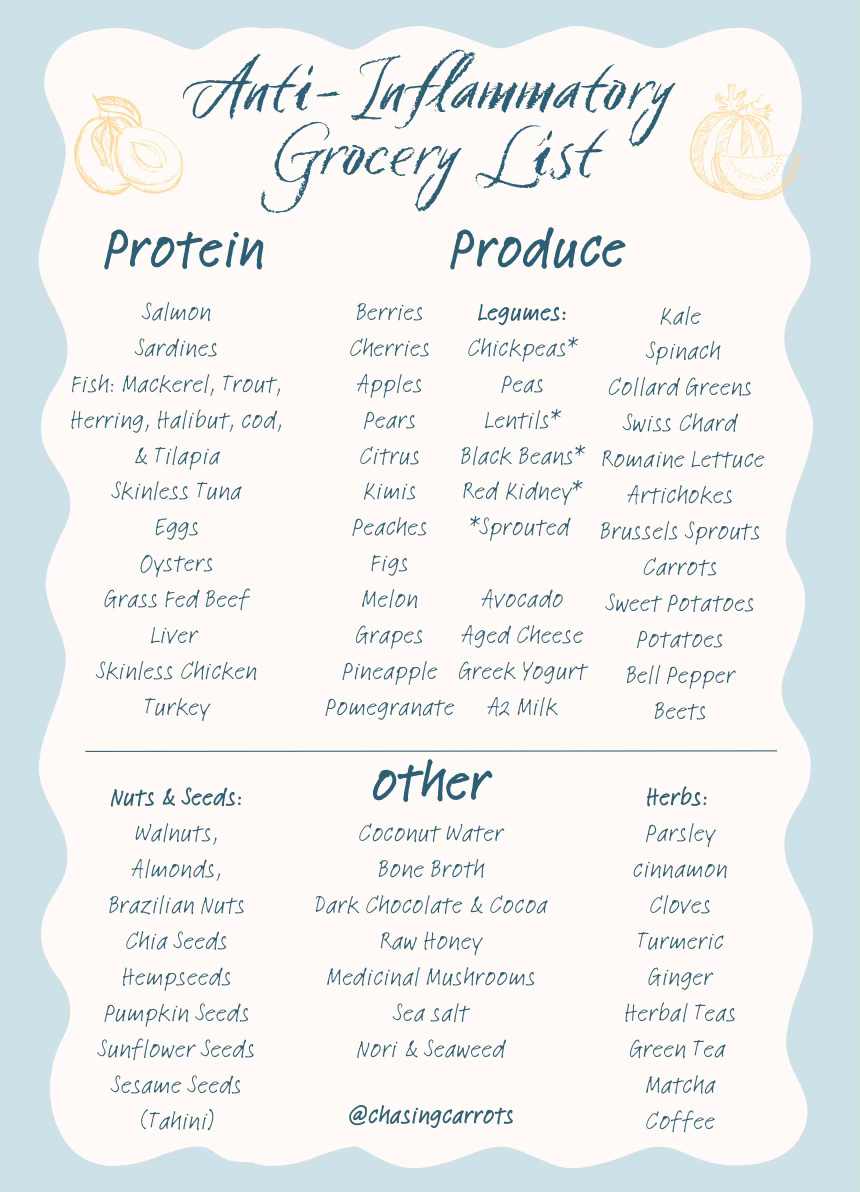
Wow this was INCREDIBLE
this is so helpful!